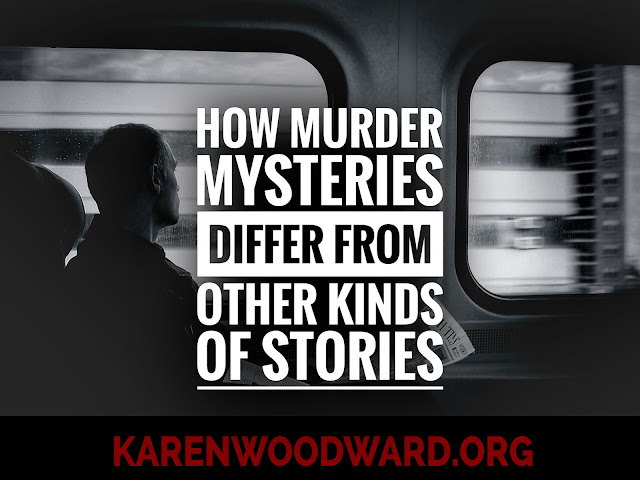One of the fundamental distinctions between murder mysteries is whether the plot is open or closed. Today I explore this distinction, breaking it down into its constituent parts and focusing on its significance for the writer.
Open vs Closed Mysteries
Whether a mystery is open or closed depends on when the reader discovers the identity of the murderer.
If the identity of the murderer is unveiled at the beginning of the story without the reader having to do any work to figure out his identity—that is, if the identity of the murderer wasn’t a part of the puzzle for the reader—then the mystery is said to be OPEN. In most open mysteries the reader knows MORE than the detective for much of the story.
On the other hand, if the identity of the murderer is unveiled at the end of the story and if the murderer’s identity was the main mystery—the main puzzle for the reader—then the mystery is said to be CLOSED. In most closed mysteries the reader knows LESS than the detective (though the detective may draw conclusions from the evidence, conclusions he doesn’t immediately share with the reader).
Open Mystery
Lee Goldberg, scriptwriter for Diagnosis Murder and author of many of the Mr. Monk books, advises that if you write an open murder mystery make sure that both the murderer and the reader believe the perfect crime has been committed. What they read for, what pulls them through the story, is watching the detective find all the tiny—or not so tiny—flaws you didn’t notice.[1]
The knowledge gap: Notice that through much of the open mystery there is a knowledge gap. The detective mulls over clues the reader knows MORE about. This knowledge gap occurs because the reader knows everything the murderer does. What no one knows at the beginning of the book is what mistakes the murderer made. This is what the detective figures out by the end of the book, it’s what reveals the murderer’s identity.
The question: From what the reader already knows of the murder, and from the clues the detective uncovers throughout the story, will she be able to figure out where/when/how the murderer slipped up before the detective figures out the identity of the murderer?
The suspects: The detective interviews suspects but the focus is different because, often, the detective has a pretty good idea early on who the murderer is. The problem is proving it.
Closed Mystery
If, on the other hand, a closed mystery is more to your liking make sure the crime is confounding to both reader and detective. The clues don’t seem to single out any one person. In this case what pulls the reader through the story is watching the detective come to understand the connections—connections between clues, connections between people—that aren’t immediately obvious.[1]
The knowledge gap: Through much of the story there is no knowledge gap: the reader knows as much as a detective. Everything the detective discovers the reader also knows AND the detective is the reader’s only source of information, the reader doesn’t get to peek over the murderer’s shoulder as he does the deed. That said, the detective will know more than the reader after around the two-thirds or three-quarter mark, but this is only because he has drawn inferences from the clues he has found, inferences he doesn’t have to divulge to the reader until the denouement very end.
The question: Can the reader figure out the identity of the murderer before the detective does?
The suspects: The detective searches for clues that will help him determine each of the suspects MEANS, MOTIVE and OPPORTUNITY. The detective looks for inconsistencies between what he knows about the suspects—the available clues—and what any particular suspect has told him.
Examples of Open and Closed Mysteries
Open mystery:
- Columbo.
- Diagnosis Murder (some episodes).
Closed mystery:
- Agatha Christie’s stories.
- Arthur Conan Doyle's Sherlock Holmes stories.
- Mr. Monk (some episodes).
Note:
1. To read more about open vs closed mysteries I recommend Lee Goldberg’s article: How to Write a Murder Mystery.
Every post I pick something I love and recommend it. This serves two purposes. I want to share what I’ve loved with you, and, if you click the link and buy anything over at Amazon within the next 24 hours, Amazon puts a few cents in my tip jar at no cost to you. So, if you click the link, thank you! If not, that’s okay too. I’m thrilled and honored you’ve visited my blog and read my post.
The books I’m recommending today are Lee Goldberg’s Mr. Monk books. It has been a few years, but I’ve read each one of these and loved them! If you liked the Mr. Monk TV series and you love murder mysteries, give these a try!
That’s it for today! Have a great weekend and I’ll talk to you again on Monday. Till then, good writing!










